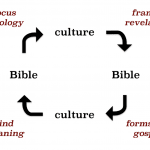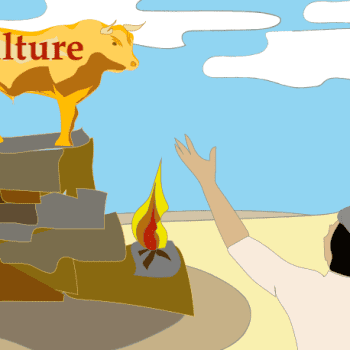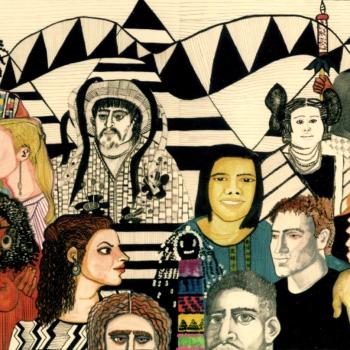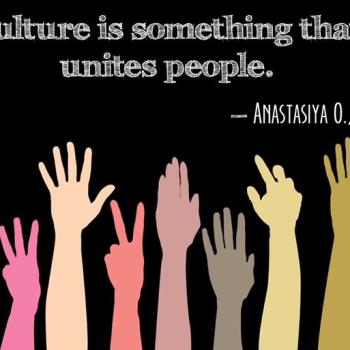In my previous post, I showed how the Bible and culture are inextricably tied together. Misunderstanding that relationship undermines the prospects of doing contextualization in a biblically faithful and culturally meaningful way.
This post highlights a few key points from (what I consider to be) the most important chapter in One Gospel for All Nations. The discussion there deserved a lengthier explanation, but, alas, I had a word limit to keep.
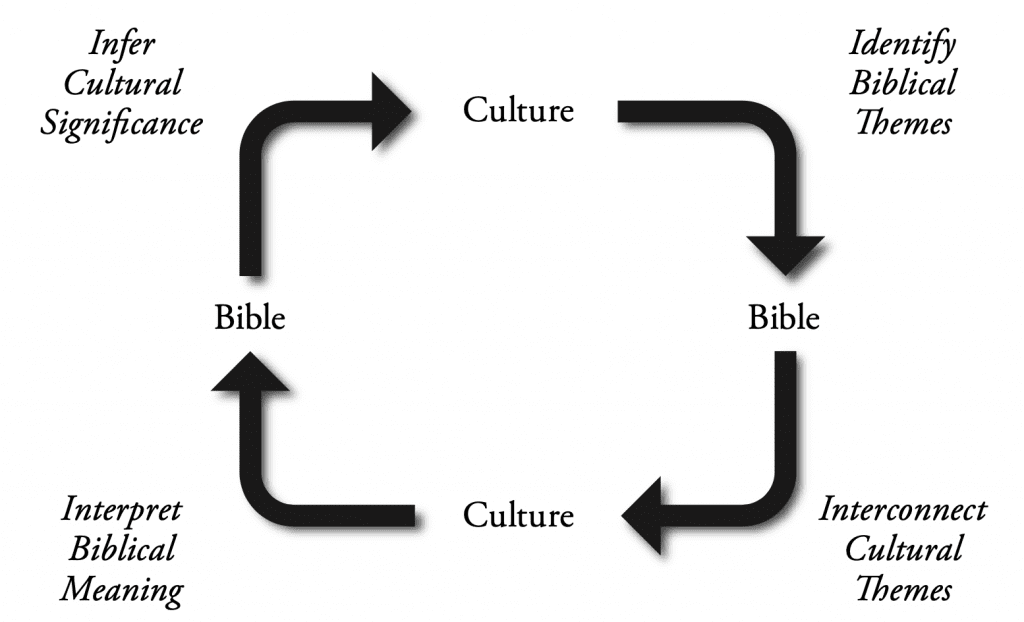 NOTE: The picture above is different from that seen in my last post. This figure stems from the one in the previous post. Below are the four primary stages of contextualization
NOTE: The picture above is different from that seen in my last post. This figure stems from the one in the previous post. Below are the four primary stages of contextualization
Stage One: Identify Biblical Themes
Stage Two: Interconnect Cultural Themes
Stage Three: Interpret Biblical Meaning
Stage Four: Infer Cultural Significance
I will address each one in turn, but you will have to follow the links and/or (re)read the book to dig deeper into the specifics. This post only looks are Stages 1-2. The next post will return to Stages 3-4.
Stage One: Identify Biblical Themes
What is the end goal of stage one? We want to identify how the Bible frames and explains the gospel. The gospel tells a specific story with a particular plot. In stage one, we study the Bible to discern what sort of flexibility we have in presenting this story.
From the start, our model takes measures to ensure that contemporary culture doesn’t subtly distort our understanding of God’s revelation. This stage in the process makes a key contribution to the contextualization process. It helps us determine the organizing principles that we can use. After all, on the surface, we have no way to differentiate one cultural vantage point from another. Thus, this stage tempers or regulates the influence of our culture. Accordingly, we begin by examining the Scripture.
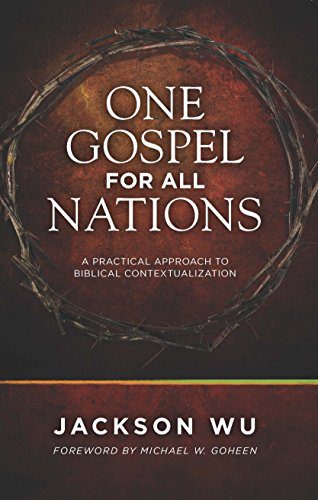
First, we identify the gospel’s framework as used in its original setting. Only then can we explore discern the gospel’s significance in each context. Proceeding in this sequence is one way (at least to some degree) to guard against cultural syncretism.
We first study the entirety of Scripture to grasp the coherency of the grand biblical story. Our goal is not mere familiarity; rather, we identify threads that unify the story.
This is essentially the work of biblical theology. The narrative (not theology) dictates which threads are unifying.
By reading broadly across the biblical text, we identify the essential framework for presenting the gospel. I have already argued for a threefold structure—creation, covenant, kingdom. Certain interconnections exist between these three motifs, which I’ve called “framework themes.” In addition, many concepts and images explain the gospel’s significance, which I’ll call “explanation themes” (e.g., atonement, justification, sacrifice, adoption, etc.)
Stage Two: Interconnect Cultural Themes
How do our findings connect to the cultures in which we live? Whereas stage one identifies the gospel’s framework and explanatory themes, stage two uses these themes as a lens for studying culture. Our goal is to interlink the biblical text and the cultural context. The model presented in One Gospel for All Nations equips us to identify thematic parallels between the two. We want to find which cultural themes faithfully frame and explain a biblical gospel presentation.
Before overlaying the ancient and modern contexts together, we first observe what is accomplished by working in this order—from biblical text to cultural context—in stages one and two. Early in the contextualization process, the Bible frames the agenda for what follows. How so?
Here are two ways.
- At the most fundamental level, the model establishes the grid through which to look at modern culture. That automatically gives a certain priority to Scripture in that it directs our focus when looking at culture.
- The model more easily allows Scripture to determine which ideas we regard as firm and flexible (i.e., those framing the gospel’s essence versus those explaining its significance). This is because the grand biblical narrative (biblical theology) precedes systematic theology and our cultural study (stage two).
The themes that frame the biblical gospel should also define our presentations.
In stage one, we use the firm and flexible gospel themes in the Bible so that, in stage two, we can identify how to frame a biblically faithful and culturally meaningful gospel presentation. The model helps us discern how the gospel most directly speaks to a specific culture, yet without forsaking theological balance.
We can balance themes found in both the Bible and local culture. Using the biblical framework as a grid for studying culture, we are forced to consider the interrelationships between themes within a given culture. We must not forget that concepts, images, and language have distinct connotations and interconnections within specific cultures. The model I’ve proposed slows us down to consider how ideas relate to one another. At the same time, our sequence ensures that we do everything given the gospel’s biblical framework.


